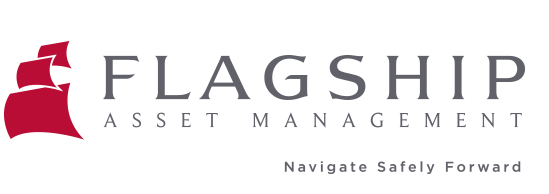
31 May Is there a bubble in consumer goods stocks?
As published in Business Day on 30 May, 2021 by Kyle Wales
There has been much consternation about the fact that technology stocks appear overvalued. While it pays to be cautious, especially after a multi-year bull-run in which the tech heavy NASDAQ composite has outperformed the S&P 500 by 8% p.a. over the last 5 years, there are two flaws with this logic. Firstly, there is the belief that a high multiple equals over-valued. Secondly, there is the belief that technology companies are a homogenous group so a statement that applies to a subset of technology businesses applies to them all.
Some tech appears reasonably priced
We concur that certain tech businesses appear fully valued, especially those that have listed into the recent IPO boom, but the more established technology businesses (FAANGs + Microsoft) are not that expensive either when (1) judged relative to their own growth prospects, (2) when judged relative to some other sectors, which have attracted far less scrutiny with regards to valuations. One such sector is the consumer staples sector.
One sector that appears to be expensive is the consumer goods sector
Consumer staples businesses unquestionably fall within the domain of “high quality” businesses. They generate high, even “non-sensical” returns on equity (ROEs) if one adjusts for acquired intangibles. They also convert a substantial portion of their earnings into cash. However, the fact is that they are not growing their earnings and they haven’t done so for a while. This will affect the prospective returns that investors can hope to derive from them.
They are increasingly looking like nominal bonds, where investors can expect to collect a secure fixed coupon (some of which is paid as a dividend, some in the form of share buybacks) but very limited growth. They would therefore have appeal to investors that want a fixed-income like risk/return profile but this exposes those investors to risk should interest rates rise. The reason for this is that their attractiveness relative to other fixed income instruments, including government bonds, will decline.
Unilever
An excellent illustration of this would be to contrast the performance of Unilever with Facebook over the last five years.
In the case of Unilever, it trades on a blended forward P/E multiple of 19.5X[1]. However, its reported revenues have declined by 1% p.a. and its reported operating profit by grew by only 2% p.a. in the last 5 years. If one places the valuation of Unilever in the context of its growth prospects it trades on a Price Earnings Growth[2] (“PEG”) multiple of a hefty 4.5X.

[1] As at 4 May 2021, source: Bloomberg
[2] Calculated by taking the forward P/E multiple and dividing it by the prospective growth rate in diluted Earnings per share.
The company reports non-GAAP (or “pro-forma”) numbers which paint the situation in a better light but one needs to apply one’s mind critically to whether these adjustments are in fact justified.

“Underlying” revenue growth, for example, adjusts for exchange rate movements. This is a sensible thing to do in the short-term as exchange rates can vary wildly from year to year. However, in the longer-term it distorts the true picture because higher inflation in emerging markets will provide an illusory “lift” to “underlying” revenue growth numbers that isn’t justified. In reality, any boost to revenue growth that results from this factor will be compensated for through currency depreciation, which will affect hard-currency revenues.
Similarly, “core” operating profit adjusts for acquisition and disposal costs, impairments and restructuring costs. I agree with adjusting for the first two but not the final one. While the company treats restructuring costs as “non-recurring”, it has in fact incurred a restructuring cost of between $500 million and $1.2 billion in each of the last five years.
In contrast to Unilever, Facebook trades on a blended forward P/E multiple of 22X[1] but it has grown its revenues by 37% p.a. and its reported operating profit by 54% in the last 5 years. Even if one assumes that its growth in its diluted EPS reduces to the mid-teens going forward (it would be silly to extrapolate past growth numbers which Facebook delivered when it was a far smaller business), this would place it on a PEG of 1.5X versus Unilever’s 4.5X. Unlike Unilever it does not feel the need to report non-GAAP figures, perhaps because the “as reported” numbers are “good enough”.

[1] As at 4 May 2021, source: Bloomberg
Unilever is not higher quality than Facebook
The argument that Unilever is a higher quality business also doesn’t hold water. Due to the network effects around its business, Facebook has a virtual monopoly in social media in the countries where it is present, whereas there are very few categories in Unilever’s global portfolio where it would have a market share that far exceeds 20%.
Finally …
While investors should always be alert to the risk that some or other sector may be overvalued, they should question the prevailing narrative of the market. They may be surprised where the real risks of overvaluation may lie.



















